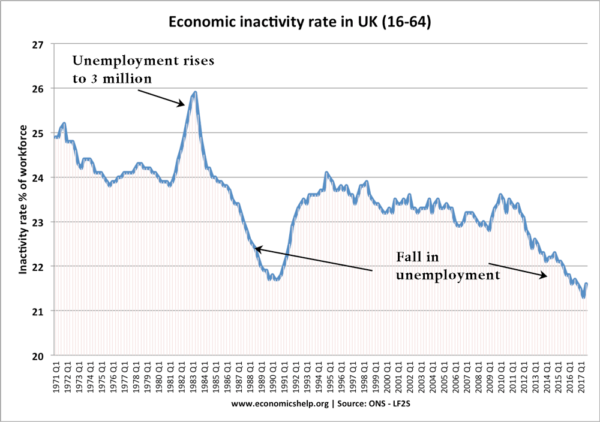Readers Question: why is there a difference between the size of the population of working age and the size of the workforce?
- The population of working age is everyone between 18-65.
- The workforce is everyone either in work or actively seeking work. This is also known as the numbers economically active.
The workforce excludes some groups of people who have voluntarily or involuntarily left the labour market (labour force). This includes:
- People on disability allowance (unable to work)
- People on sickness benefits (unable to work)
- Women having children on maternity leave
- Fathers on paternity leave.
- People demotivated by years of unemployment and so no longer seek work.
- People who have taken early retirement
- Adults in full-time education
Participation Rate
- The % of the working population who are economically active (either working or actively seeking work) is known as the participation rate.
- The participation rate is the % of 18-65 year olds who are in the labour market either working or actively seeking work)
- The participation rate varies depending on economic cycle and other factors. In 2010, it was 63% in the UK. See UK Participation Rate
Inactivity rate
In the UK, the inactivity rate is fairly stable, but there is a cyclical dimension. When unemployment rose to 3 million in 1983, the inactivity rate peaked at 26%. This is because high unemployment creates an incentive for people to leave the labour market – go into education or move onto long-term sickness benefit.
A healthy job market creates an incentive for people to enter the labour market and inactivity rates falls.
Related

